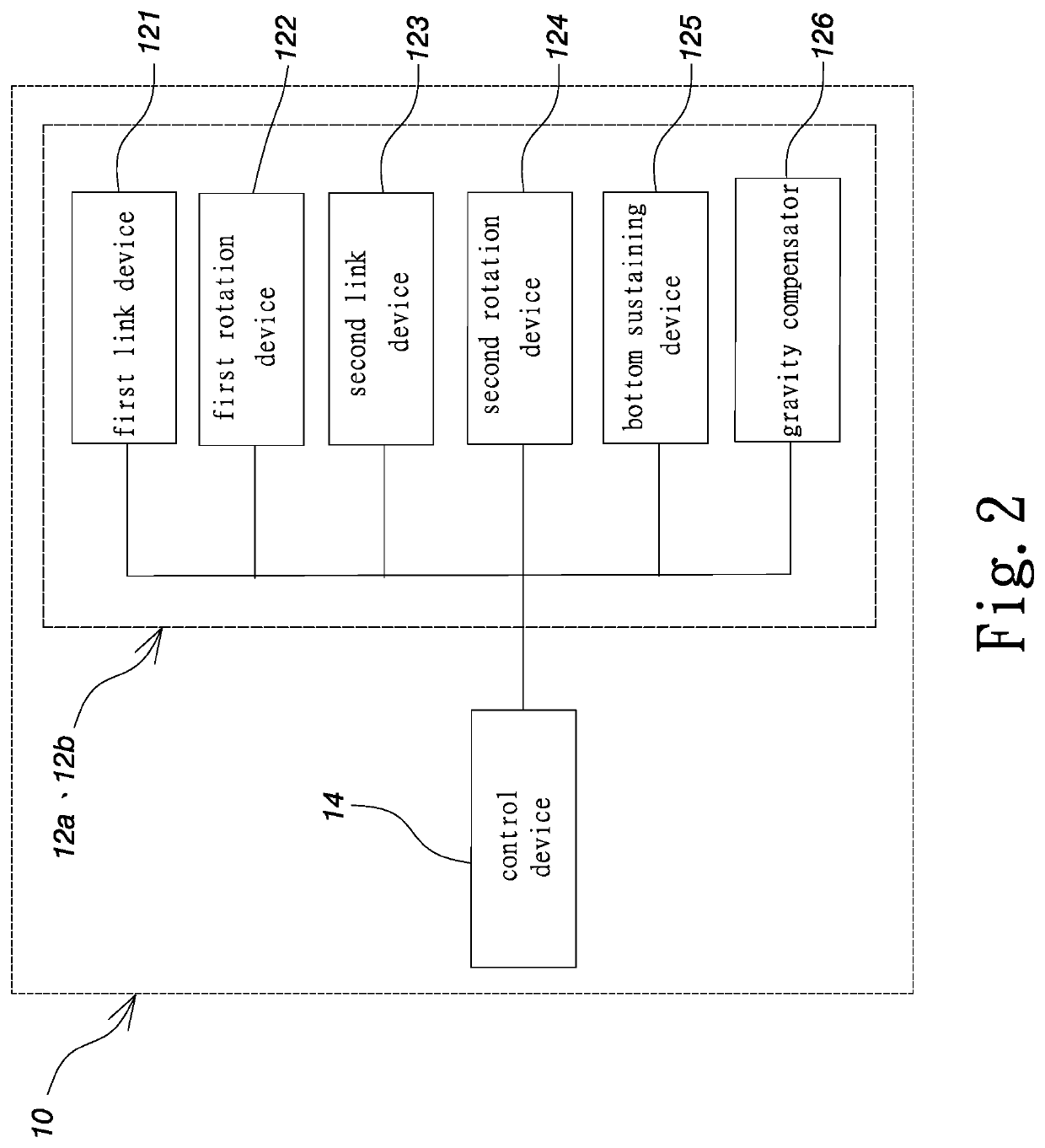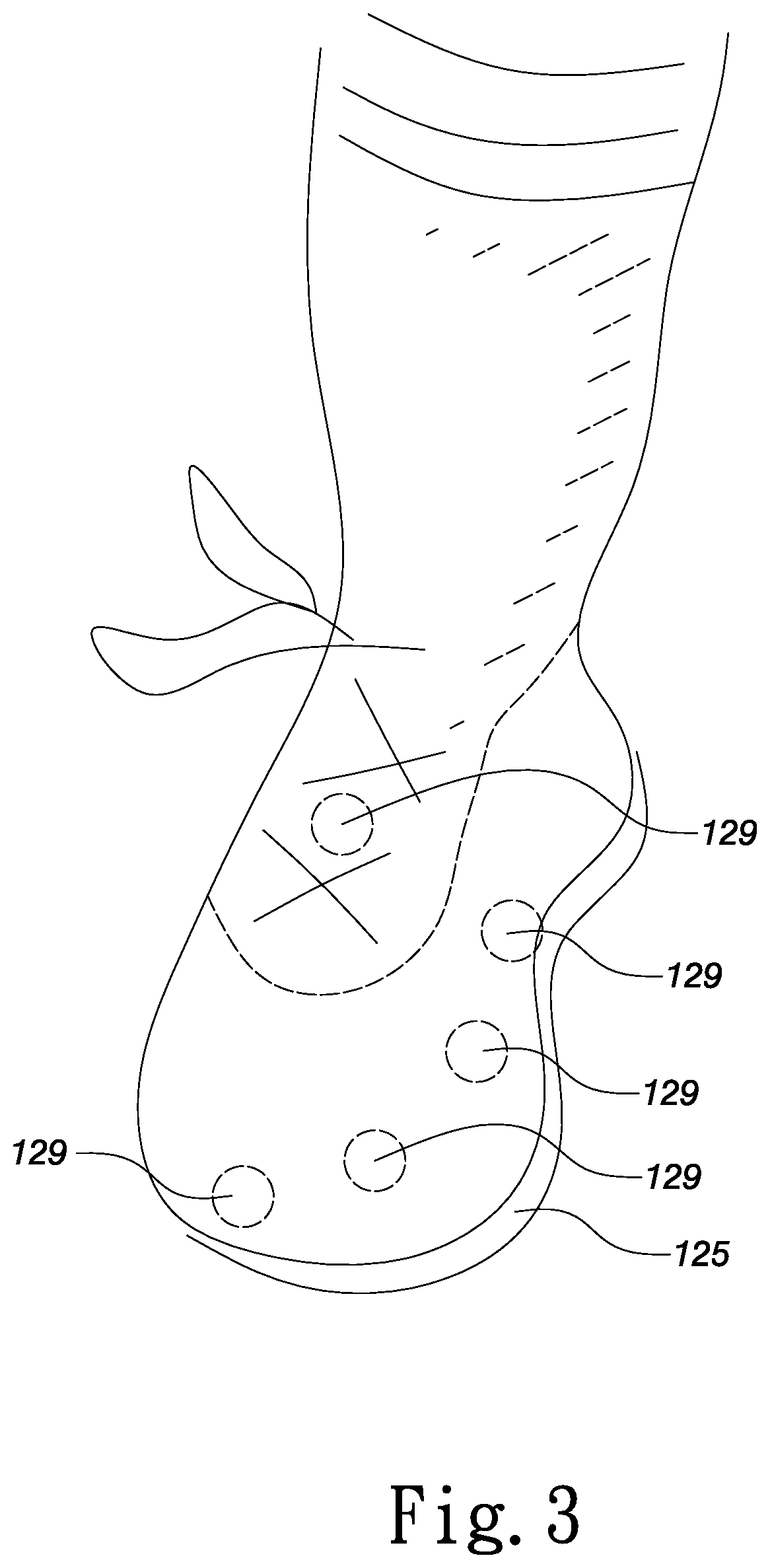Walking rehabilitation robot system
a robot and walking technology, applied in the field of robot systems, can solve the problems of increasing the probability of various diseases, increasing the number of patients with unilateral disability, and affecting the effect of rehabilitation, and achieve the effect of promoting the effect of rehabilitation
- Summary
- Abstract
- Description
- Claims
- Application Information
AI Technical Summary
Benefits of technology
Problems solved by technology
Method used
Image
Examples
Embodiment Construction
[0027]For a user who is uncomfortable unilaterally or suffers unilateral paralysis, his / her personal motivation is closely related with the effect of rehabilitation. The present invention calculates the gait of the normal left or right half body and uses the result to control the disabled half body, making both feet have symmetric and coordinate gaits and promoting the effect of rehabilitation.
[0028]Refer to FIG. 1 and FIG. 2. The present invention proposes a walking rehabilitation robot system 10, which comprises two robot feet 12a and 12b and a control device 14. The control device 14 is electrically connected with two robot feet 12a and 12b. In one embodiment, the control device 14 includes a computer, motor drivers, microcontrollers, and power supplies. In one embodiment, the present invention further comprises a waistband assembly 16. The waistband 16 is annularly disposed around the waist of the user, carrying the control device 14 and coupling two robot feet 12a and 12b, wher...
PUM
 Login to View More
Login to View More Abstract
Description
Claims
Application Information
 Login to View More
Login to View More - R&D
- Intellectual Property
- Life Sciences
- Materials
- Tech Scout
- Unparalleled Data Quality
- Higher Quality Content
- 60% Fewer Hallucinations
Browse by: Latest US Patents, China's latest patents, Technical Efficacy Thesaurus, Application Domain, Technology Topic, Popular Technical Reports.
© 2025 PatSnap. All rights reserved.Legal|Privacy policy|Modern Slavery Act Transparency Statement|Sitemap|About US| Contact US: help@patsnap.com



